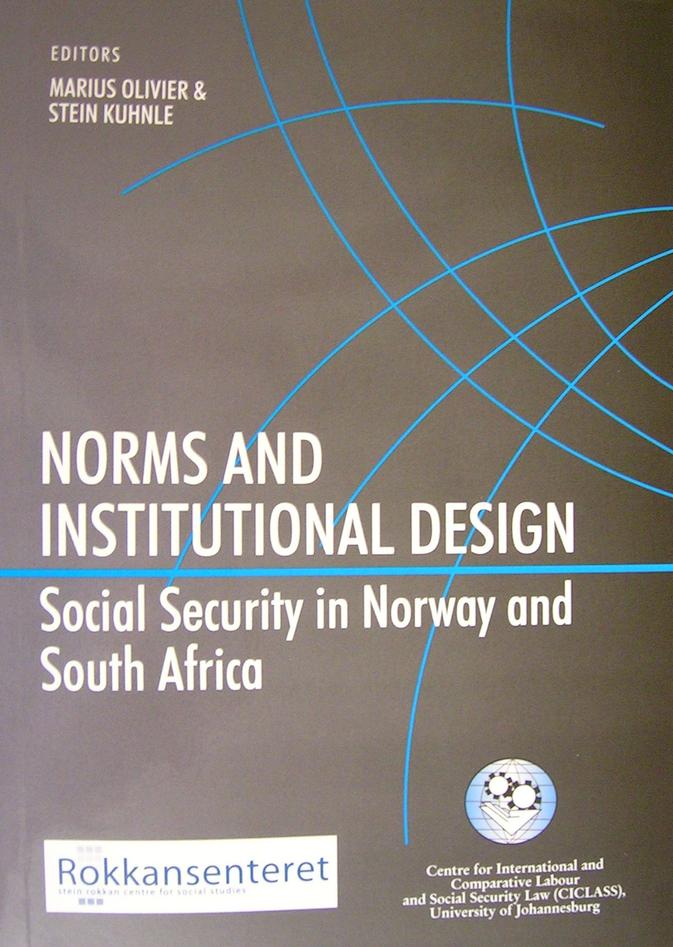Norms and Institutional Design: Social Security in Norway and South Africa
Stein Kuhnle, professor in Comparative Politics, University of Bergen and Marius Paul Olivier, Director of Centre for International and Comparative Labour and Social Security Law, University of Johannesburg, have edited this volume.
Main content
This book is among the outcomes of the project "Developing a normative framework for effective and efficient social security provisioning: An institutional perspective - South Africa". The project was administered by the Stein Rokkan centre for social research, and directed by Kuhnle in co-operation with Olivier.
The book is about the critical elements and criteria which are necessary in an institutional framework to ensure the provision of efficient and effective social security in South Africa. What are the norms and standards which should inform the formation and (re)designing of principal institutional arrangements for social security provisioning and service delivery? Why should some standards be chosen rather than others? Why and how are certain norms/standards/institutions justified rather than others? To what extent can seemingly successful arrangements in other regions/countries of the world be applicable in the South African (and SADC-) context? And what are the likely social, political and economic effects of various models of institutional arrangements? What lessons can be drawn from the variety of historical and recent experiences of European countries, and from the experiences in Scandinavian and Norway in particular?
Although the Scandinavian/Norwegian experience cannot be repeated anywhere, there may be general lessons to be learnt from political solutions chosen and experiences with various kinds of social policies and institutions.
The book contains contributions from eight Norwegian and thirteen South African researchers.
